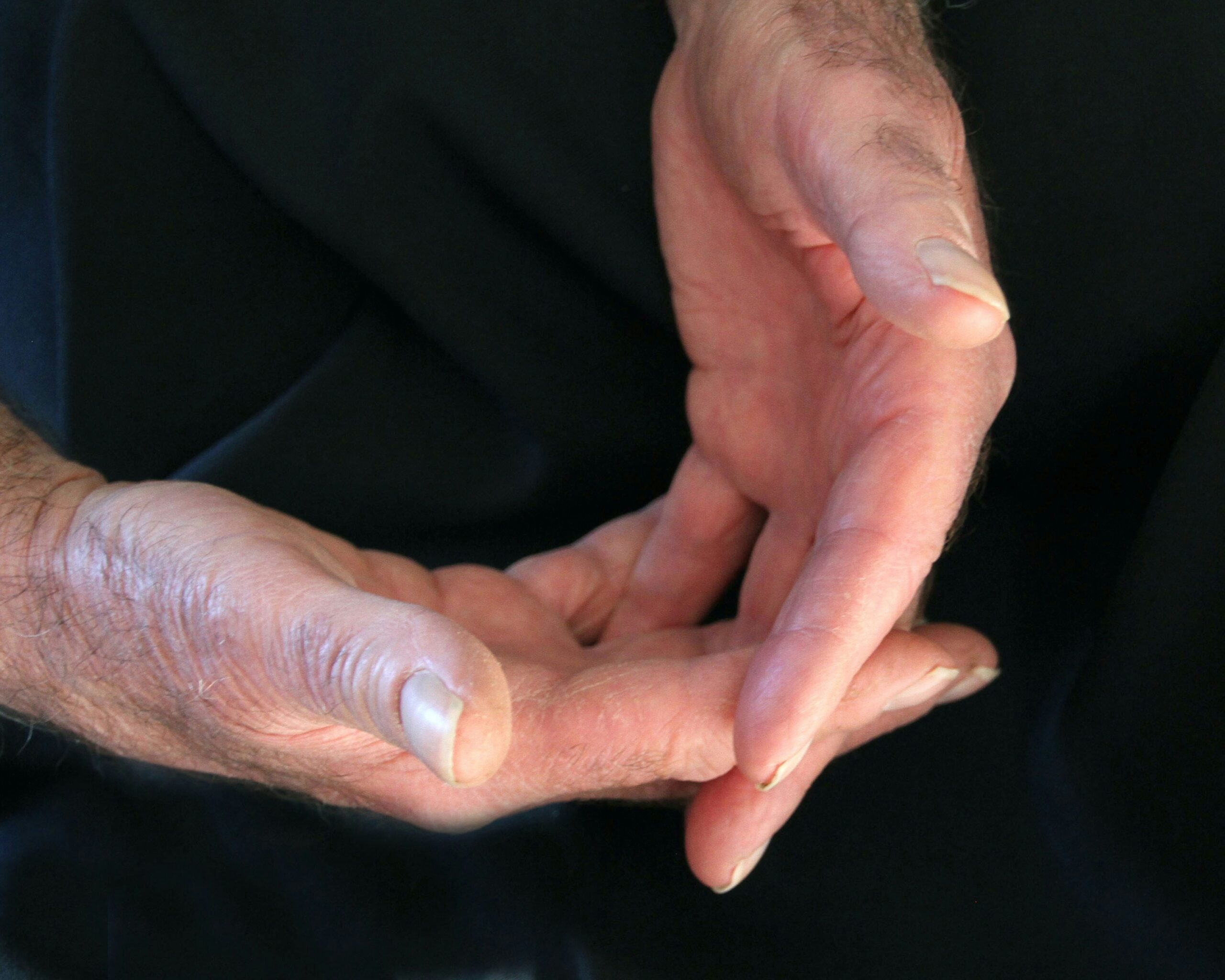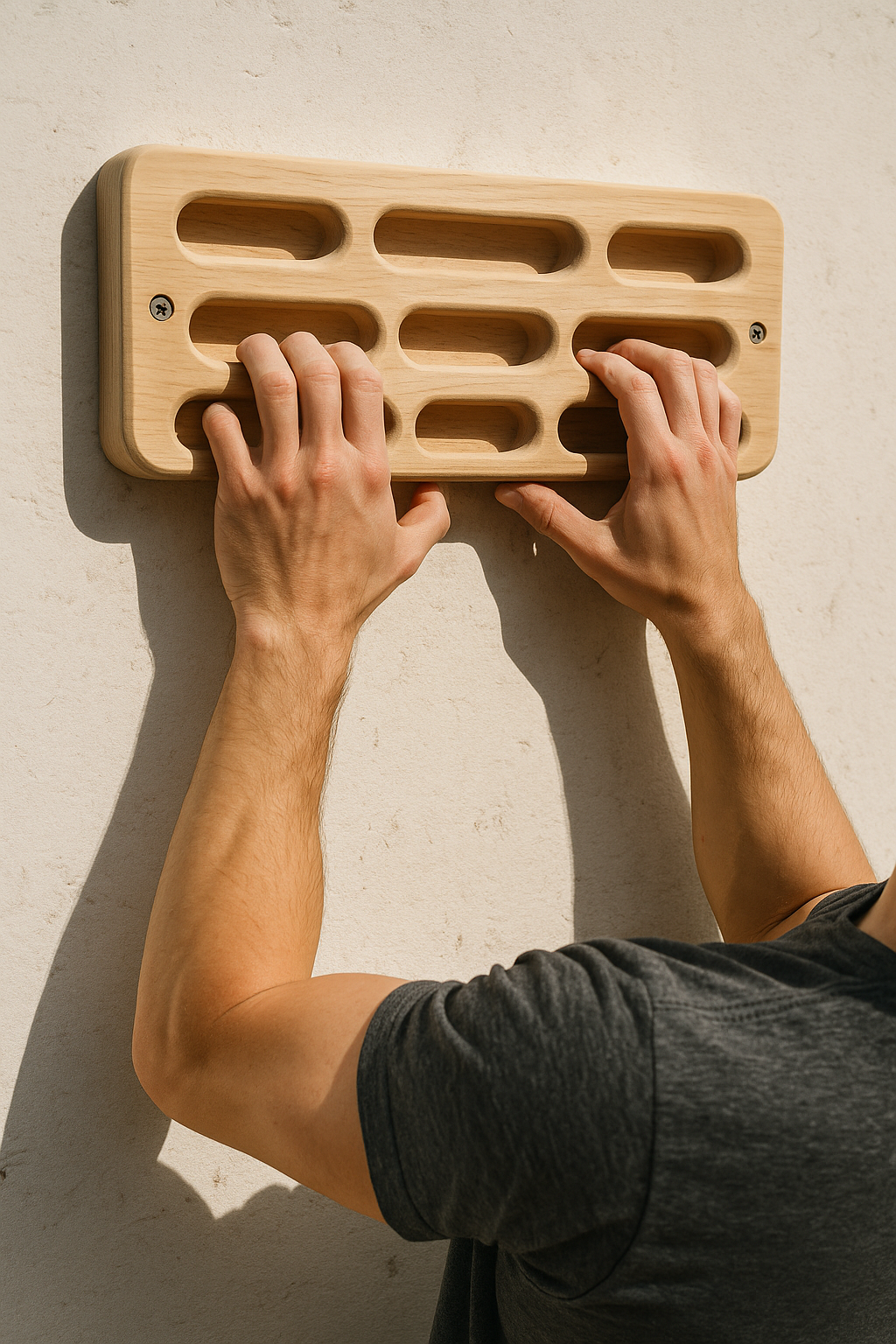As we age, maintaining muscle strength becomes essential for a high quality of life. One often overlooked yet critical area is grip strength. Poor grip strength can lead to difficulties in daily tasks like opening jars, holding utensils, or using a walker. Improve hand strength, mobility, and independence with these safe and effective grip strength exercises for elderly adults. It can even be a predictor of overall frailty. The good news? It’s never too late to improve. In this guide, we’ll explore the best grip strength exercises for seniors, how to do them safely, and why they matter more than you might think.
Why Grip Strength Matters for Seniors
Grip strength isn’t just about shaking hands or lifting objects—it’s a vital sign of overall health. In fact, several studies have shown that weak grip strength in elderly adults is linked to a higher risk of falls, disability, and even mortality.
Benefits of increasing grip strength in older adults include:
- Improved ability to perform daily activities (e.g., buttoning clothes, carrying groceries)
- Enhanced balance and reduced fall risk
- Increased upper body strength and joint stability
- Better independence and mental health
What Causes Weak Grip in Elderly?
Aging naturally leads to muscle loss (sarcopenia), and hand muscles are no exception. Other causes include:
- Arthritis: Limits range of motion and causes hand pain
- Neurological conditions: Like Parkinson’s or stroke
- Sedentary lifestyle: Reduced muscle use leads to atrophy
- Poor circulation: Can affect hand and finger dexterity
Top Grip Strength Exercises for Elderly
Before starting any new exercise, always consult with a healthcare provider. The following grip strengthening exercises are safe, simple, and effective for most older adults.
1. Tennis Ball or Stress Ball Squeeze
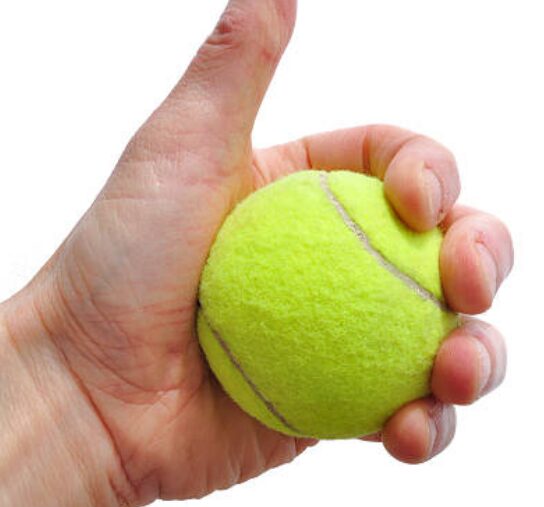
Purpose: Strengthens the entire hand—fingers, palm, and forearm. Increases endurance and grip coordination.
Equipment: Soft tennis ball, stress ball, or therapy ball
Instructions:
- Sit comfortably with your back straight and your feet flat on the floor.
- Hold the ball in one hand with a relaxed grip.
- Squeeze the ball as hard as you can without causing pain.
- Hold the squeeze for 5 to 10 seconds.
- Slowly release and relax your hand for a few seconds.
- Repeat for 10–15 reps per hand.
- Switch to the other hand and perform the same number of reps.
Tips:
- Perform 2–3 sets per hand.
- Rest for 30–60 seconds between sets.
- Use softer balls if you have arthritis or pain.
- Keep your wrist straight to avoid strain.
Variations:
- Do pulse squeezes: squeeze and release quickly 20 times.
- Try using a hand gripper device for progressive resistance.
Benefits:
- Enhances hand endurance for daily tasks like holding a mug or grocery bag.
- Improves circulation and reduces hand stiffness.
2. Finger Extensions with Rubber Band
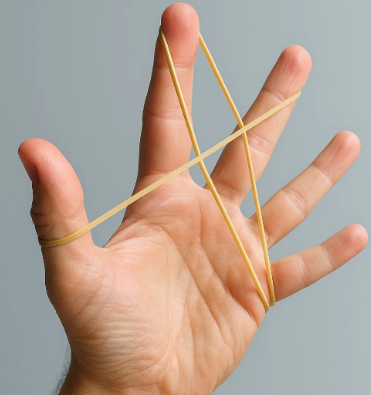
Purpose: Strengthens finger extensors which balance hand grip strength. Essential for tasks like typing and spreading fingers apart.
Equipment: A thick rubber band, hair tie, or commercial finger exerciser
Instructions:
- Place the rubber band around all five fingers near the base of your fingernails.
- Start with your hand in a relaxed position.
- Slowly spread your fingers apart as wide as possible against the band’s resistance.
- Hold the position for 2–3 seconds.
- Slowly return to the starting position.
- Repeat 10–15 times per hand.
Tips:
- Perform 2–3 sets, 3–4 times a week.
- If it becomes too easy, double the band or use a thicker one.
Variations:
- Isolate specific fingers (e.g., thumb and index finger).
- Do “finger walking” by expanding one finger at a time.
Benefits:
- Helps balance grip strength and finger mobility.
- Reduces stiffness caused by prolonged gripping (important for arthritis).
3. Wrist Curls with Light Weight

Purpose: Improves wrist and forearm strength, vital for lifting and supporting objects.
Equipment: Light dumbbells (1–3 lbs), soup cans, or water bottles
Instructions:
- Sit on a chair or bench with your forearms resting on your thighs, palms facing up.
- Hold a dumbbell in each hand.
- Let your wrists hang slightly over your knees.
- Slowly curl your wrists upward, lifting the weight only using your wrists.
- Hold for 2 seconds at the top.
- Lower slowly to the starting position.
- Perform 10–15 reps per hand.
Tips:
- Keep your forearms still and only move your wrists.
- Start light and increase weight gradually.
Variations:
- Reverse wrist curls: Palms face down to work wrist extensors.
- Wrist rotations: Slowly rotate the wrist with weight in hand to improve joint mobility.
Benefits:
- Supports daily activities like pouring liquids, using utensils, and opening jars.
- Strengthens wrists and reduces risk of carpal tunnel syndrome.
4. Putty Squeezes (Therapy Putty Exercises)

Purpose: Strengthens fine motor muscles in fingers and improves coordination.
Equipment: Therapy putty (available in different resistance levels)
Instructions:
- Start with a piece of therapy putty in your palm.
- Squeeze it fully, pressing your fingers and thumb into the putty.
- Roll it into a ball and flatten it out with your fingers.
- Pinch it between the thumb and each finger individually.
- Use fingers to “dig” and pull the putty apart.
Tips:
- Use different colors of putty to adjust resistance (soft to firm).
- Perform 5–10 minutes of putty exercises daily.
- Wash hands and putty after each session.
Variations:
- Thumb press: Use just the thumb to flatten putty.
- Finger hooks: Dig fingers into putty and stretch.
Benefits:
- Increases dexterity and hand-eye coordination.
- Excellent for seniors with arthritis, Parkinson’s, or post-stroke recovery.
5. Towel Twist Exercise
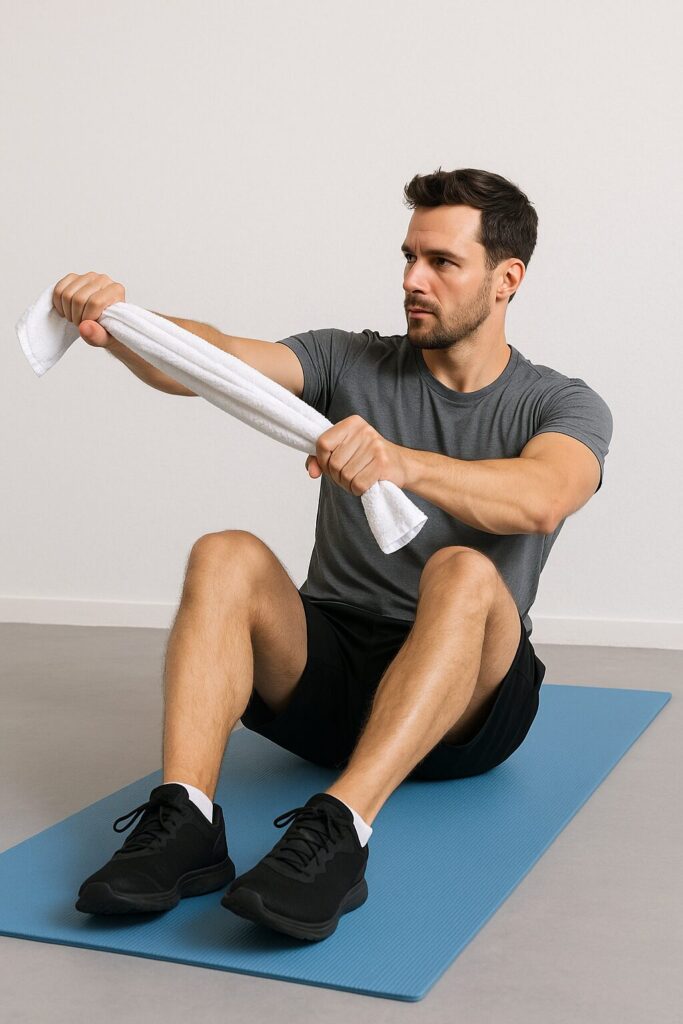
Purpose: Mimics natural hand movements like wringing clothes or opening a lid.
Equipment: Hand towel or dish towel
Instructions:
- Sit with a straight back and hold a rolled-up towel with both hands.
- Hold the towel in front of you at chest height.
- Twist the towel by moving one hand forward and the other backward—as if wringing out water.
- Hold for 2 seconds, then twist in the opposite direction.
- Perform 10–12 reps in each direction.
Tips:
- Use a damp towel for added resistance.
- Keep wrists neutral to avoid strain.
Variations:
- Try holding the twisted towel in position for an isometric hold (10 seconds).
- Twist while standing to engage core muscles.
Benefits:
- Improves forearm, wrist, and finger coordination.
- Encourages bilateral hand coordination.
6. Pinch Grip Hold

Purpose: Develops thumb and finger strength for pinch-based tasks like holding paper, keys, or cards.
Equipment: Small books, flat stones, pinch blocks, or weighted objects
Instructions:
- Pinch a flat object between your thumb and fingers (like a weight plate).
- Hold the pinch for 10–20 seconds.
- Release and rest for 30 seconds.
- Repeat 3–5 times per hand.
Tips:
- Keep your wrist straight during the hold.
- Use both fingers and thumb equally.
Variations:
- Pinch different shapes (square, circular) to challenge coordination.
- Try “pinch walking” by carrying the item across the room.
Benefits:
- Enhances grip control for tasks like turning doorknobs or locking doors.
- Builds static hand strength and endurance.
Weekly Grip Strength Exercise Routine for Elderly
| Exercise | Sets | Reps / Duration | Rest Between Sets | Frequency |
|---|---|---|---|---|
| 1. Tennis Ball Squeeze | 2–3 | 10–15 squeezes per hand | 30–60 sec | 3x per week |
| 2. Finger Extensions (Rubber Band) | 2–3 | 10–15 per hand | 30–60 sec | 3x per week |
| 3. Wrist Curls (Palms Up) | 2 | 10–12 per hand | 60 sec | 2–3x per week |
| 4. Reverse Wrist Curls (Palms Down) | 2 | 10–12 per hand | 60 sec | 2–3x per week |
| 5. Therapy Putty Exercises | 1–2 | 5–10 minutes total | As needed | Daily or 3x per week |
| 6. Towel Twists | 2 | 10–12 twists each direction | 30–60 sec | 3x per week |
| 7. Pinch Grip Hold | 3 | 10–20 sec hold per hand | 30–45 sec | 2–3x per week |
Tips for Using the Routine:
- Warm-Up: Begin each session with light hand stretches (1–2 minutes).
- Cool Down: Finish with wrist circles and finger flexion/extension.
- Progress Slowly: Add more reps or resistance every 2–3 weeks.
- Rest Days: Allow at least one rest day between sessions.


